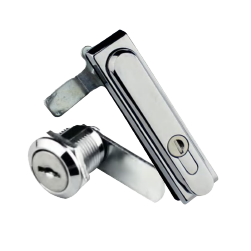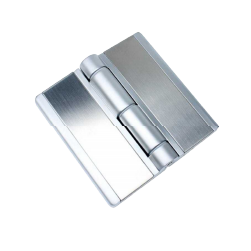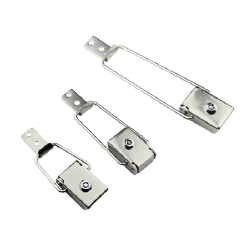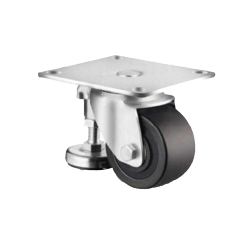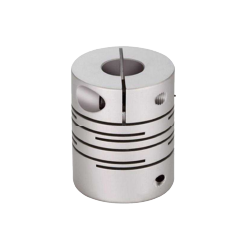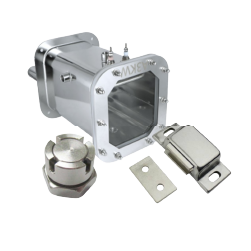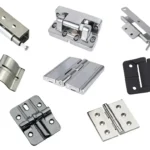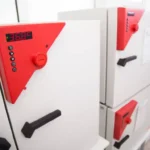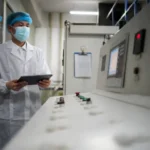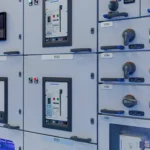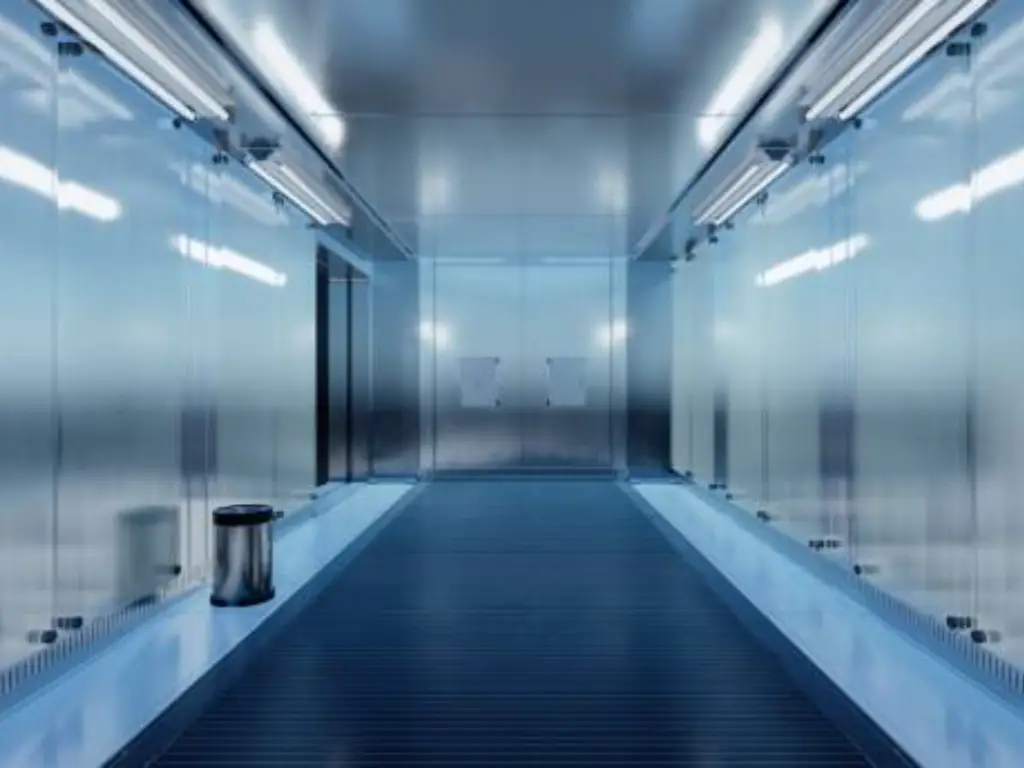
The invention of modern industrial and technological products requires a deep knowledge of their working boundaries. In aerospace parts that are exposed to the demands of flight in the atmosphere and pharmaceutical products that need constant stability, validation is a very important process. Environmental testing is at the heart of this process, a scientific, controlled process of exposing a product to the conditions it will experience in its lifecycle. The walk-in environmental chamber is the ultimate tool for large-scale products or high-volume testing. This guide is a comprehensive engineering and selection guide to these key assets, starting with the principles and then the key details that make a healthy, long-term investment.
What Is a Walk-In Environmental Chamber?
A walk-in environmental chamber is an enclosed, controlled environment that is big enough to allow personnel to enter and is used to model certain environmental conditions. Its essence is to perform environmental testing on large products, components, or batches of smaller items at the same time. The systems within the chamber are proactive in controlling and regulating the exact temperatures and, in most instances, the humidity levels to enable engineers and scientists to monitor and measure the reaction of a product to these stressors.
The main purpose of an environmental chamber is to establish a reproducible and artificial environment that mimics the real world. This may involve recreating the high temperatures of a desert, the high humidity of a tropical climate, or the sterile and controlled climate of a laboratory. In this way, manufacturers are able to speed up the aging of a product, detect possible failure points, and ensure that a product is operating correctly and is durable enough to make it to the market.
The basic difference between a walk-in and a smaller reach-in or benchtop chamber is size. A reach-in chamber may be appropriate to test a single circuit board or a small material sample, but a walk-in environmental test chamber is needed when the object is too large or numerous to fit in such a small workspace. This encompasses applications such as full vehicle testing, testing assembled server racks or stability testing of palletized pharmaceutical products. The size of a walk-in chamber alone presents engineering challenges of airflow, temperature, and structural integrity that are not found in smaller chambers.
Core Construction and Airflow Design
A major design choice that determines the performance of a chamber, its logistical needs, and positioning in the market is the physical architecture of the chamber. The decisions of the type of construction and the airflow technique that will be used in this case have implications that extend both to the manufacturing process and the application of the end-user.
Structural Architectures: Modular vs. Welded
The two most common construction methodologies provide a trade-off of flexibility versus final structural integrity.
- Modular (Panel-built): This method involves using pre-fabricated, insulated panels that are assembled on-site. On the manufacturing side, this enables the standardization of panel manufacturing, resulting in economies of scale. To the customer, it provides unparalleled size and configuration flexibility, the option to add to the chamber in the future, and quicker on-site installation. The main engineering problem that we as manufacturers have to overcome is the seamless design of the panels to ensure an airtight seal, which is essential to performance and efficiency.
- Welded (One-piece): In this process, the inner liner of the chamber is completely welded at the factory and delivered as a unit. It provides unmatched structural rigidity and maximum possible sealing and is an ideal selection in applications where very high humidity, vacuum, or extreme pressure differentials are required. The logistical limitation is the primary one; the size of the chamber is restricted by the possibility of transporting it over the road. This renders it a perfect fit for smaller walk-ins or applications where performance cannot be sacrificed.
Optimizing Uniformity: Airflow Systems
The tight temperature and humidity uniformity requirements that customers have is virtually entirely a matter of airflow engineering. Air circulation is not a trifle but the main aspect of the design of the chamber.
- Horizontal Laminar Flow: In this design, conditioned air is introduced on one wall of the plenum and is discharged on the other wall, forming a horizontal flow across the workspace. This works very well in testing the products on shelves or racks since the air is forced to pass through the test items, thus giving the same exposure.
- Vertical Laminar Flow: This system feeds air into a ceiling plenum and recirculates it on the floor. It forms a column of air that is top to bottom, reducing turbulence. This is the best design to use when testing large and solid objects because the air moves in the same direction all over the product.
These architectural and airflow designs must be a choice, and it must be based on the target applications and market segments we are targeting.
Key Industries and Critical Applications
The applications of walk-in environmental chambers are spread across almost all fields of high-tech manufacturing and research. Their capability to certify the performance of large components and entire systems under stress renders them essential in numerous industries that demand high stakes.
- Automotive: One of the key users is the automotive industry, which uses chambers to test the full-vehicle environment. This entails exposing cars, trucks, and electric vehicles to extreme heat, cold, and humidity to determine the strength of engines, battery systems, interior materials, and electronic controls.
- Aerospace and Defense: In the aerospace industry, parts should be able to endure a high rate of temperature changes and changing atmospheric conditions. Everything, including avionics and fuselage components, satellite components, is tested in chambers, with the simulation of changes in altitude, as well as temperature and humidity. Military standards (MIL-STD) require stringent testing to maintain the reliability of equipment in severe combat conditions.
- Pharmaceuticals and Medical Devices: Pharmaceuticals must be subjected to rigorous stability testing to ascertain shelf life, regulated by standards such as those of the International Council for Harmonisation (ICH). Walk-in stability chambers offer a large, temperature- and humidity-controlled space to store products over a long duration. Even medical equipment, such as MRI machines or surgical equipment, is tested to make sure that it is reliable in controlled hospital settings.
- Electronics and Telecommunications: Manufacturers test complete server racks, cellular base stations, and other large electronic systems to verify that they can dissipate heat and run continuously in different climatic conditions. One of the main goals is to prevent thermal stress that causes condensation and component failure.
- Energy and Renewables: The expanding renewables industry is depending on these chambers to explore the durability of solar panels, inverters, and large-scale battery storage systems in the long term. These products are subjected to decades of outdoor environments, and chambers are required to replicate such cycles to confirm performance and warranty claims.
- Packaging: Companies can evaluate the integrity of packaging materials and designs by subjecting them to controlled humidity and temperatures to determine how they can prevent the contents of the package from being spoiled, corroded, or otherwise damaged during shipping and storage.
Decoding Core Performance Specifications
A set of specific technical requirements determines the performance of a walk-in environmental chamber. These metrics are critical in understanding the capabilities of a chamber to be matched with certain test requirements. The four most important parameters are temperature range, humidity control, change rates, and uniformity.
Temperature Range: This is a specification of the lowest and highest temperatures that the chamber can reach and maintain. The typical range might be -70°C to +180°C. The bottom limit is usually determined by the kind of refrigeration system employed, e.g., a single-stage refrigeration system to moderate cold or a cascade system to ultralow temperatures.
Humidity Control: This is the capacity of the chamber to control the amount of moisture in the air, usually in percentage of relative humidity (percentage RH). The usual humidity is 10%-98% RH. Humidity system is a complicated subsystem, which involves vapor generators, dehumidification coils, controlled by an electronic humidity sensor, to ensure the accurate humidity level. In tests that demand very low humidity, a dry air purge system can be required.
Change Rates: This is also called ramp rates and is used to determine the rate at which the chamber is capable of altering the temperature of the chamber in degrees Celsius per minute (°C/min). High change rates are essential in thermal shock and stress screening tests that are typical of the electronics and aerospace sectors.
Uniformity: Uniformity refers to the degree of consistency of the temperature and humidity in the whole interior of the chamber. A narrow uniformity specification (e.g. ±0.5C °C) guarantees that a large product or a batch of smaller products is all undergoing the same environmental conditions, so test data is reliable and repeatable.
These specifications are important and directly related to industry standards. A car manufacturer may require high change rates to model the heating and cooling of a car engine bay, whereas a pharmaceutical firm performing ICH stability testing before launch may require outstanding temperature and humidity stability (e.g., ±2 °C and ±5 percent RH) over extended durations. A standard used in the defense industry, MIL-STD-810, defines particular test conditions that specify the necessary temperature limits, humidity cycles, and ramp rates of different types of equipment. The key to programming and running these complex test profiles correctly is an effective controller.
| Specification | Typical Range | Importance / Application | Relevant Standards |
| Temperature Range | -70°C to +180°C | Defines operational limits for testing components from arctic cold to engine heat. | MIL-STD-810, IEC 60068 |
| Humidity Range | 10% RH to 98% RH | Crucial for testing material response to moisture, preventing corrosion, and ensuring product stability. | ICH Q1A, ASTM F1980 |
| Change Rate | 1°C/min to 20°C/min | Essential for thermal shock, stress screening, and accelerated life testing. | JESD22-A104 |
| Uniformity | ±0.5°C to ±2.0°C | Ensures all parts of the test specimen experience the same conditions, vital for data integrity. | ICH Q1A, GMP |
Beyond Specs: The Unseen Hardware of Reliability

Although performance specifications establish what a chamber is capable of, its long-term reliability and the integrity of its test results are established by its physical construction. Even the most sophisticated refrigeration and humidity control systems will be useless in case of failure of the structure of the chamber. Here, the industrial hardware, the hinges, latches, and handles that hold the chamber together, becomes a mission-critical component.
A walk-in chamber is a stressful environment that is dynamic. The extreme change of temperature causes materials to expand and contract, which places a constant pressure on seals and structural joints. The chamber doors are frequently huge and exceed 100 kilograms in weight, and they have to be opened and closed thousands of times during the life of the chamber. Moreover, there is always a threat of corrosion of metallic parts due to the high humidity. When a door latch does not offer enough compression or a hinge bends under the weight, the airtight seal is destroyed. This causes condensation, icing, and loss of a lot of energy, and above all, invalidation of the test.
This is one of the challenges that have been solved by specialized component manufacturers such as KUNLONG over the last 20 years for the world’s leading equipment builders. To a chamber manufacturer, long-term reliability cannot be accomplished by producing all parts internally; it can be accomplished by collaborating with hardware experts who have perfected the art of durability in harsh conditions.
These components are very important engineering choices. Take into account materials: ordinary steel is not enough. Its resistance to corrosion and structural integrity over a broad temperature range necessitate the use of high-grade stainless steel (including SUS304 and SUS316). A heavy-duty hinge design should be such that it can support the weight of the door at rest and the forces of the movement of the door at work so that it will not drop or break after 20,000 cycles. A compression latch has to be designed to apply a precise, consistent force to ensure an airtight seal, test after test.
A collaboration with a hardware expert can access this pool of knowledge. It enables the choice of established parts in a broad catalog or the creation of a tailored design to fit special test needs. This partnership guarantees that the invisible hardware of the chamber is not an afterthought, but a pillar of its quality and reliability.
Key Evaluation Criteria for a Superior Chamber
The assessment of a chamber should be holistic, whether it is purchased or constructed. The two perspectives have the following criteria.
- Design and Construction Evaluation: Consider basic architecture. Does the construction (modular or welded) suit the purpose of use? Do the materials, including the grade of stainless steel, match and fit the performance range?
- Evaluating Performance vs. Application Requirements: Be sure that the performance requirements of the chamber, such as its temperature/humidity range and change rates, are well-suited to the particular test requirements and industry standards that the chamber is supposed to satisfy.
- Examining Component Quality to Long-Term Reliability: Go beyond the main systems. Question the quality of the supporting parts. This involves the brand and reputation of the controller, precision of the sensors, and most importantly, the strength of the door hardware.
- Taking into account the User Experience and Serviceability: A higher chamber is user-friendly. This incorporates a user-friendly control interface, conveniently located access ports, and ergonomics. Moreover, convenient access to serviceable parts is an indicator of considerate design that reduces the overall ownership cost.
Future Trends in Environmental Testing
Environmental testing is a constantly developing field, which is influenced by technological innovation and the challenges of the new industry. There are a number of major trends that define the future of walk-in chambers.
- IoT Integration and Connectivity: Chamber controller systems are being more and more connected to the Internet of Things (IoT). It can be remotely monitored and controlled, data can be automatically logged, and proactive maintenance warnings are possible, which enhances efficiency and minimizes the necessity of on-site supervision.
- Energy Efficiency: Walk-in chambers are energy-consuming systems. Designs that enhance energy conservation, including variable-speed compressors, high-efficiency insulation, and smart control algorithms to optimize energy consumption during long-duration tests, are in demand.
- New Technologies Testing: The advent of new technologies introduces new testing needs. The switch to electric cars needs chambers that can test large lithium-ion battery packs safely. The invention of hydrogen fuel cells and new generation electronics will require new and more advanced simulations.
Making a Smart Long-Term Investment

Finally, the usefulness of a walk-in environmental chamber is quantified in its long-term stability and data integrity. It is an important capital investment to buy, and an important engineering accomplishment to make. The achievement of both of these efforts depends upon a platform of quality that goes all the way to the very core systems and all the way to the most vital hardware.
To buyers, this would be to go beyond the spec sheet to get to know the engineering philosophy and quality of the components of the chamber you are considering. To manufacturers, it is creating more than what is on the spec sheet, understanding that long-term durability is the strongest attribute you can provide. It is this common devotion to quality that propels the whole industry onwards and makes the crucial task of environmental testing possible to be conducted with confidence and accuracy.

